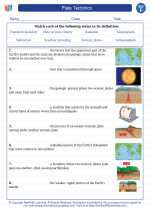Lithosphere
The lithosphere is the outermost layer of the Earth and is composed of the crust and the uppermost part of the mantle. It is solid and relatively rigid, and is divided into tectonic plates that float on the semi-fluid asthenosphere below.
Composition
The lithosphere is primarily composed of rocks, minerals, and soil. The crust is made up of two types: the continental crust, which is thicker but less dense, and the oceanic crust, which is thinner but denser. The uppermost part of the mantle beneath the crust is also part of the lithosphere.
Structure
The lithosphere is divided into several tectonic plates that fit together like a jigsaw puzzle. These plates can move relative to each other, which leads to various geological phenomena such as earthquakes, volcanic activity, and the formation of mountain ranges.
Functions
The lithosphere plays a crucial role in supporting life on Earth. It provides a solid surface for the growth of vegetation, the habitation of animals, and the development of human civilizations. The lithosphere also stores valuable natural resources such as minerals, fossil fuels, and groundwater.
Study Guide
- What is the composition of the lithosphere?
- Describe the structure of the lithosphere.
- How do tectonic plates contribute to geological phenomena?
- What role does the lithosphere play in supporting life on Earth?
- What are some valuable resources stored in the lithosphere?
◂Science Worksheets and Study Guides Sixth Grade. Plate Tectonics

 Worksheet/Answer key
Worksheet/Answer key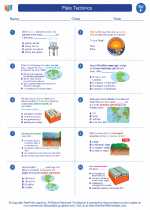
 Worksheet/Answer key
Worksheet/Answer key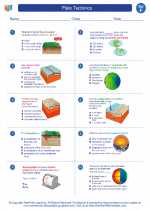
 Vocabulary/Answer key
Vocabulary/Answer key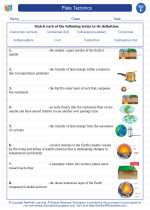
 Vocabulary/Answer key
Vocabulary/Answer key
 Vocabulary/Answer key
Vocabulary/Answer key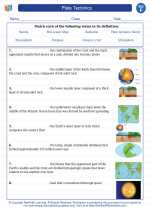
 Vocabulary/Answer key
Vocabulary/Answer key